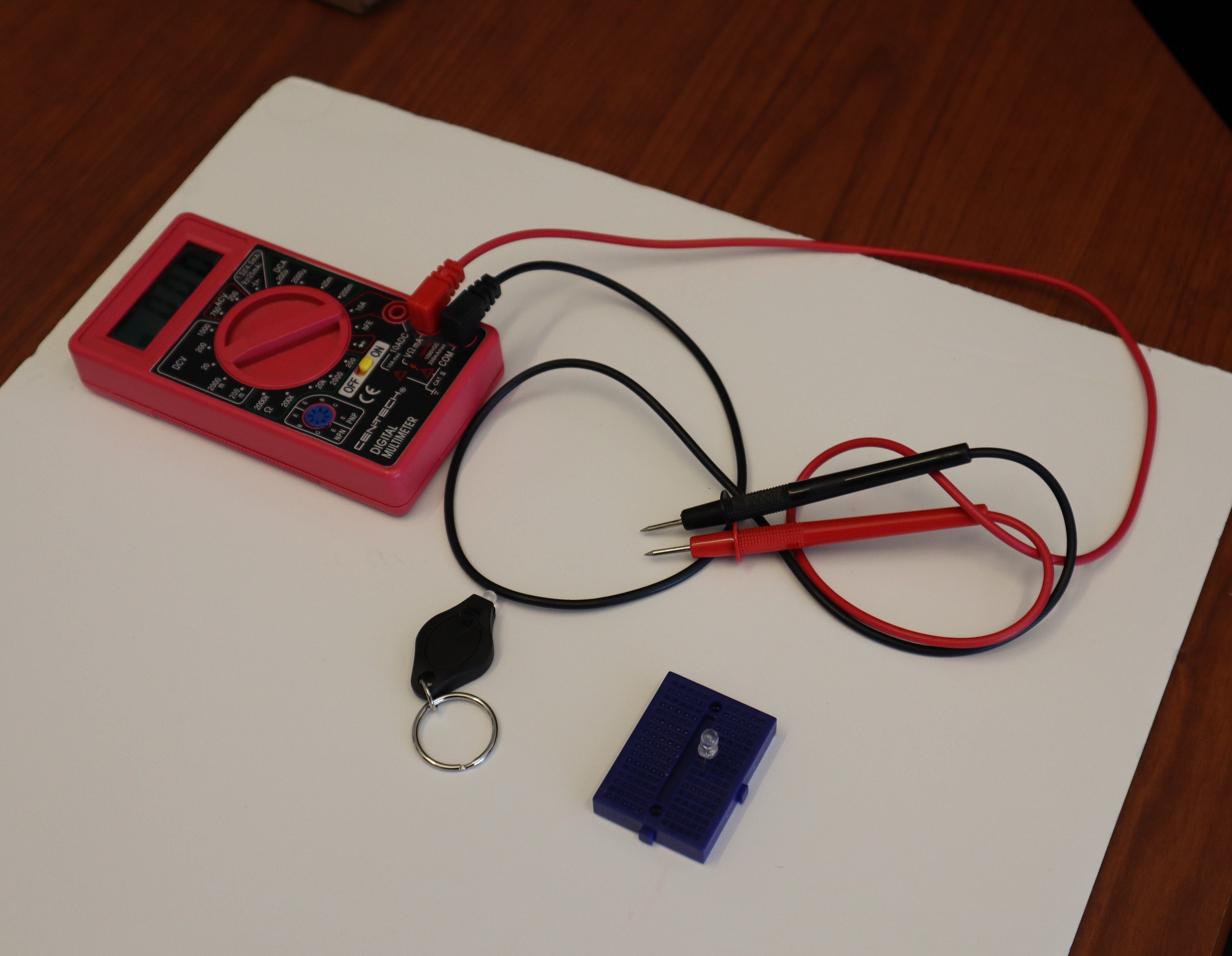Planck's Constant and the Photoelectric Effect
Around 1900, Max Planck developed the idea of a fundamental unit of energy, a quantum, and thus began the field of quantum mechanics. Albert Einstein and Niels Bohr used Planck's ideas as a way to explain the photoelectric effect and the modern theory of the hydrogen atom respectively. It wasn't until 1916 that Robert Millikan made the first measurement of Planck's constant. Now you can bring the basis of quantum to your classroom to calculate Planck's constant using LEDs!

This kit includes:
- Three hands-on activities bringing the photoelectric effect and Planck's constant to life.
- PowerPoint presentation
Students will:
- Build an electroscope using common household materials
- Perform activities that will illustrate the photoelectric effect using a flashlight, voltage meter, and LEDs
- Use different colored LEDs to calculate Planck's constant
Lab skills learned:
- create simple circuits to power LEDs
- measure the wavelength of light using a spectroscope
- measure voltage across a diode
- data analysis using spreadsheets
Lab Name
COOKIE USAGE:
The University of Nebraska System uses cookies to give you the best online experience. By clicking "I Agree" and/or continuing to use this website without adjusting your browser settings, you accept the use of cookies.

